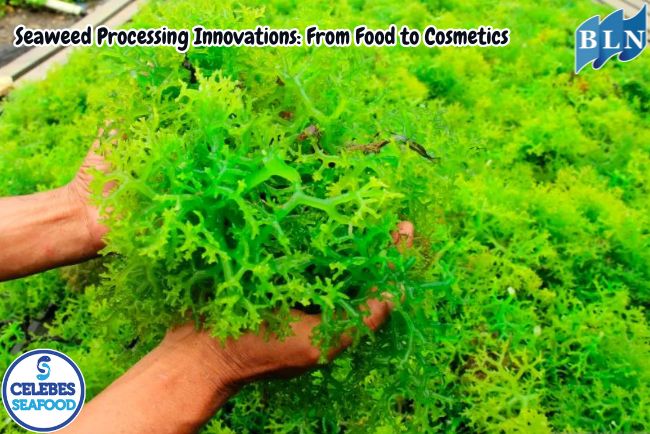What Are the Products of the Fisheries Industry and Their Benefits?
By. Azizah - 19 Aug 2025.jpg)
lautnusantara.comWith abundant marine resources, this sector is capable of producing a wide variety of high-value products, ranging from fresh fish and processed items to valuable by-products. In this article, we will thoroughly explore the outputs of the fisheries industry, its contribution to the economy, and the prospects for its future development.
1. Main Products of the Fisheries Industry
a. Fresh Fish
Fresh fish is the primary product generated by the fisheries industry. Commonly traded species include tuna, snapper, tilapia, and catfish. Demand for fresh fish continues to grow in both local and international markets due to its high nutritional value.
An article from Indofishmart, “Harga Ikan Nila Fillet 1 Kg: Peluang Investasi di Industri Perikanan” (“Price of Tilapia Fillet 1 Kg: Investment Opportunities in the Fisheries Industry”), highlights that products such as tilapia fillets hold promising investment prospects. With proper processing, fresh fish like tilapia can become a high-value export commodity.
b. Processed Products
Processed products such as fish fillets, smoked fish, fish nuggets, and fish balls are increasingly popular. Beyond extending shelf life, processed fish products also add value to fish that might otherwise have low market prices.
Franchises based on processed fish products have become a promising business trend. The Indofishmart article “Prediksi Franchise Terlaris 2025: Investasi Bisnis yang Menjanjikan” (“Top Franchise Predictions for 2025: A Promising Business Investment”) notes that businesses based on processed fish products have strong growth potential, particularly as consumer preferences shift toward practical yet healthy foods.
c. Fishery By-Products
By-products such as fish oil, fish meal, fish skin, and even fish bones also have significant economic value. These are commonly used in the cosmetics, pharmaceutical, and animal feed industries. Utilizing these by-products supports the zero-waste principle that many industries are now embracing.
2. Contribution of the Fisheries Industry to the Economy
a. Increasing Income for Fishermen and Entrepreneurs
The fisheries sector provides employment opportunities for millions of people, from fishermen to small and medium-sized enterprises (SMEs). With proper management, the industry can significantly improve the welfare of coastal communities.
b. Export Potential
Indonesia is one of the largest exporters of fishery products in the world. Commodities such as tuna, shrimp, and seaweed are among the most sought-after in global markets. Government efforts to promote sustainability and competitiveness in the fisheries industry can be seen in events like Catfish Day 2024, discussed in the article “Mengembangkan Industri Perikanan yang Berkelanjutan dan Berdaya Saing” (“Developing a Sustainable and Competitive Fisheries Industry”). This event highlights the importance of innovation and sustainability in fisheries.
c. Product Diversification
Innovation in fishery product diversification is also key to success. Processed products such as fish-based snacks and organic products are increasingly popular, both domestically and internationally.
3. Challenges and Solutions in the Fisheries Industry
a. Overfishing
Excessive exploitation of marine resources poses a serious threat. One solution is to implement sustainable fishing zones and adopt modern fishing technologies to improve efficiency without damaging ecosystems.
b. Lack of Technological Innovation
Limited use of technology in fish processing and distribution reduces competitiveness. Investment in technologies such as modern cooling equipment and digital marketing applications is urgently needed.
c. Price Fluctuations
Fishery product prices often fluctuate due to weather, seasonal factors, and market demand. Product diversification and proper marketing strategies can help mitigate this issue.
4. Future Business Potential
a. Development of Premium Products
Demand for premium fish products such as sashimi-grade tuna or organic fish continues to increase. Entrepreneurs can seize this opportunity by focusing on quality and product certification.
b. Franchise Business
As highlighted in Indofishmart’s article on top franchises, businesses based on processed fish products have strong growth prospects in the coming years. The franchise model enables entrepreneurs to expand market reach while maintaining product quality standards.
c. Fishery Ecotourism
Fishery-based ecotourism, such as fish farm tours or aquaculture education, represents an attractive alternative business. Besides offering visitors unique experiences, it also promotes awareness of sustainable marine resource management.
5. A Sustainable Fisheries Industry
A sustainable fisheries industry not only focuses on production outcomes but also on environmental conservation. Practices such as eco-friendly aquaculture, efficient use of raw materials, and proper waste management are essential.
Events like Catfish Day 2024 demonstrate the growing awareness of sustainability. Innovations in energy-efficient and eco-friendly catfish farming are examples of how the industry can continue to grow without damaging ecosystems.
If you are interested in our OCTOPUS WHOLE CLEANED BALL TYPE, OCTOPUS WHOLE CLEANED FLOWER TYPE please do not hesitate to contact us through email and/or whatsapp.







